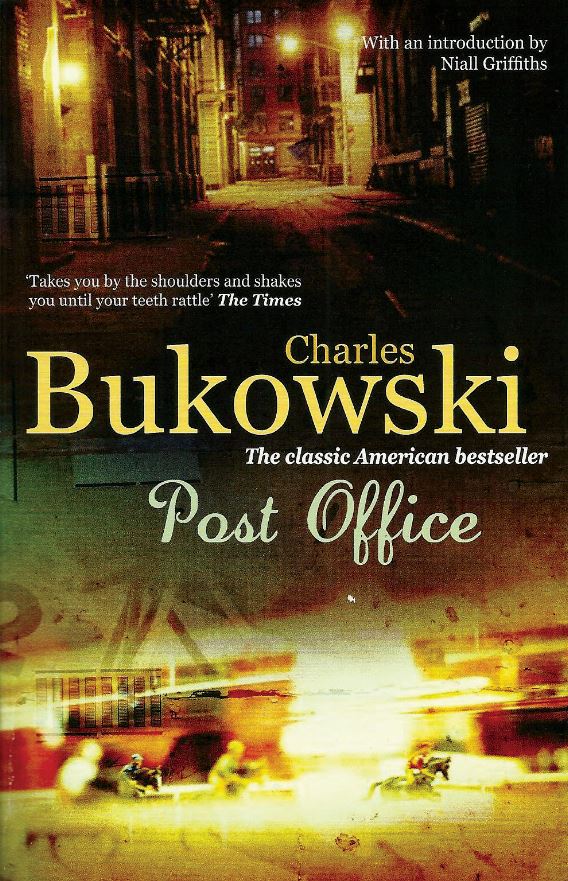The great divide : A book review
Fiction
The Woman Next Door
Yewande Omotoso
Published: 2016
Publisher: Vintage
Language: English
Pages: 279, Paperback
In an affluent neighborhood in Cape Town, South Africa, two strong-willed, successful women live next door to each other. Widows and in their 80s, the two come from completely different backgrounds and are sworn enemies, with each trying to make life a little difficult for the other.
But fate brings them together one day—albeit unwillingly—and has both living under the same roof.
The premise of Yewande Omotoso’s novel is simple. But the author has effectively managed to bring to focus how the repercussions of apartheid were widespread and deeply felt by families across the continent for years even after the White minority rule came to an end. The impacts of racial discrimination—mainly based on skin color and facial features that existed from 1948 till the early-1990s—in modern life is what Omotoso explores through her two main characters.
Marion Agostino is a white native of Cape Town. Once the primary architect in her own firm she had to stop working when she had children and now her children mostly ignore her. Hortensia James is a famous black textile designer whose husband, Peter, is on his deathbed, and they have no children. After her husband’s death she finds out he has a daughter from another woman. Hortensia has been Marion’s neighbor for the past 20 years, living in the very house that Marion meticulously designed and wanted to possess herself.
The chapters alternate between Marion and Hortensia and we get to know their backstories and slowly understand how they became the women they are now—bitter and loveless. But there are many more layers to these women and that’s what keeps the story interesting. Also, it’s not that the women chose to go on a journey of discovery and self-healing but circumstances are such that it’s what they both eventually end up doing.
Omotoso was born in Barbados and grew up in Nigeria before moving to South Africa with her family in 1992. Her first novel ‘Bom Boy’, published in 2011, got critical praise and many literary awards. In ‘The Woman Next Door’ Omotoso shows how prejudice can fuel hatred among people as well as the ramifications it leaves in its wake. But the witty story is more than just a tale of black versus white for it stunningly depicts the wisdom that comes with age and thus has an underlying charm that you just can’t resist.
Review of "What Happened That Night" : One twist after another
What Happened That Night
Deanne Cameron
Publisher: Wattpad Books
Published: September 2019
Language: English
Pages: 328, Paperback
Don’t judge a book by its cover, they said. But I think I will continue doing so, especially when it’s an author I haven’t read before. Because that’s how I picked up ‘What Happened That Night’ by Deanne Cameron. The cover is eerie—with a barn of sorts partly hidden by leafless trees—and I just felt like there was a good story there. I wasn’t wrong.
Initially posted on Wattpad in 2015, What Happened That Night starts with a murder. Griffin Tomlin, Clara Porterfield’s neighbor and the boy she had been secretly crushing on for years, has been found dead, floating in the swimming pool in his backyard. Next thing you know, Clara’s sister, Emily, is awaiting trial for Griffin’s murder. During his funeral, Emily tells Clara that she killed Griffin for her and that now he can no longer hurt her.
You understand there’s a secret there and that Griffin wasn’t the golden boy the entire neighborhood as well as his school thought him to be. In fact, no one—not even Clara—is as they appear and that’s how the story becomes even more interesting. You are not only trying to unearth the mystery surrounding Griffin’s murder but also slowing untangling the knots that make each character.
The novel shuffles back and forth between the present day and the events prior to Griffin’s murder as Cameron weaves a narrative that keeps you guessing what must have happened that night up until the very end. For someone who has been able to predict how most thriller novels end for quite a while now, that was a surprise.
What I liked about What Happened That Night is that the characters, unlike in most thriller novels, aren’t black or white but a shade of grey—just like in real life. And Cameron is really skilled at bringing in twists and turns just when you least anticipate it. You almost make up your mind about something or someone when the complete opposite seems to be true, and that keeps happening again and again till you don’t know what to think anymore.
It could have all been confusing and chaotic but Cameron, who’s been writing and posting on Wattpad since she was 16, knows what she’s doing and is crystal clear about her characters and where her story is headed. If you enjoy a good murder mystery then you definitely don’t want to miss out on What Happened That Night.
Haruki Murakami's 'What I Talk About When I talk About Running' : A book review
There was a time when I compulsively read Haruki Murakami. It began with ‘Kafka on the Shore’. Then I read ‘Norwegian Wood’ and ‘The Wind-Up Bird Chronicle’ before moving on to his collection of short stories, ‘After Dark’, and then picking up the novella, ‘Sputnik Sweetheart’. All his stories share a similar theme and, unlike reading other authors, I feel reading Murakami can mess your head a little after a while—all the surrealism can be a bit too much sometimes.
And so, I had been on a Murakami break when I discovered ‘What I Talk About When I Talk About Running’. Initially I was hesitant to get back to reading Murakami and left without buying the book but a memoir of sorts by a prolific writer wasn’t something I could resist for long, and I bought it the second time I visited the bookstore. And I am glad I did.
What I like about Murakami is that he writes short, beautiful sentences. I guess one has to also credit Philip Gabriel’s translations for that. But Murakami’s style is such that the words just flow. And that makes for easy and impactful reading.
‘What I Talk About When I Talk About Running’ introduces us to Murakami as more than a writer. Here, he tells us how he began running seriously when he was 33, back in 1982. He has since competed in more than 20 marathons. On average, he runs six miles a day, six days a week, and though these days he isn’t in top form, he has no intention of not running anymore. For “to give up running would be like giving up writing, which would be like giving up living”.
Murakami knows he will never win a marathon but he doesn’t seem to mind. Then why does he still do it? One reason could be that he feels the focus and endurance required in marathons could help him apply the same disciplines to his writing. “Most of what I know about writing, I’ve learned through running every day,” he says. But more than that, as Murakami further writes, it gives you a special kind of awareness—you understand yourself better.
Devoid of any elements of magical realism, ‘What I Talk About When I Talk About Running’ doesn’t feel like reading Murakami at all. For a change, you enjoy the conversational style and the self-deprecatory tone that you aren’t used to in Murakami’s works. It also gives you a window into the mind of an author you can’t help but love. For me, I think it has got me out of my self-imposed break on Murakami and now I can’t wait to start reading ‘Killing Commendatore’ where, apparently, paintings become magic portals.
Book review: The Improbability of Love
Fiction
The Improbability of Love
Hannah Rothschild
Language: English
Publisher: Bloomsbury
Published: 2016
Pages: 479, Paperback
I have mixed feelings about this book. Though I wouldn’t rave about it, I wouldn’t tell anyone not to read it either. The blurb was catchy. I was intrigued and curious. Around 100 pages into it, I wasn’t very sure. But then, in the end, I was glad I stuck with it. Hannah Rothschild’s debut novel, ‘The Improbability of Love’, is confusing and takes time to build up, but it keeps you wanting to know more.
Annie McDee is a 31-year-old struggling chef. She is also recovering from a devastating break-up. Then, she buys a painting at a junk store for this guy she met at a speed-dating event and he never shows up. The painting becomes a sad reminder of her recklessness and she wants to get rid of it but her mother thinks it could be something of value and forces Annie to find out and thus delve into the world of art.
Since the novel opens on the night of an auction where there’s a lot of commotion over a painting with many people trying to profit from the sale, you get an idea that the painting is important. But you don’t really understand what is happening. As the novel jumps back and forth between six months, after Annie discovering the painting at a junk shop and the night of its sale at the auction, the story slowly starts to unravel.
The Improbability of Love was apparently penned as a satire on the corruption in the London art scene—the painting, the one being actioned that Annie eventually buys, is fictional but the artist, Jean-Antoine Watteau, isn’t. Rothschild meant to pose serious questions regarding the value of art. But more often than not it falls flat and comes across as silly. Though there are a lot of things going on—with romance, intrigue, murder, and more—and the book has all the potential to be a riveting read, you can’t help but feel the story could have been better narrated.
On one hand, Rothschild’s descriptions of the elaborate feasts that Annie prepares makes you want to read more, on the other, the frequent inconsistencies (and there are quite a few) make you cringe and put the book down. The same man has different colored eyes in different instances. It’s almost as if Rothschild was so invested in the art part of the story that the details elsewhere were written as an afterthought and thus feels slapdash.
The novel’s saving grace is that Rothschild knows a lot about art. And that knowledge shines through, which makes reading The Improbability of Love a pleasure, albeit in bits and pieces. Also, the eclectic mix of characters are well developed, each with their own frailties that warm you up to them. The painting itself becomes the narrator too, recalls its maker, and expresses grievances at being confined to Annie’s flat. It’s so amusing that it’s worth putting up with the problematic bits.
Search for identity
By the time I finally got my hands on a copy of ‘Pachinko’ by Min Jin Lee, I had heard and read so many reviews and book club discussions that I was sure my reaction to it would be extreme: I would either enjoy it immensely or be severely disappointed. But Pachinko, mostly because of how smoothly the narrative flows, reminded me of ‘Good Earth’ by Pearl S Buck and that has forever been on my list of all-time favorite books.
Pachinko narrates the story of four generations of Korean immigrants between 1910 and today. The story is set first in Japanese-occupied Korea in the early 20th century and then in Japan itself—Osaka, Tokyo, and Yokohama—from before the World War II to the late 1980s.
Pachinko is a Japanese version of pinball and for most ethnic Koreans living in Japan, pachinko parlors are the primary source of stable income and eventual wealth building, and the characters in the novel run pachinko parlors too. But the title serves a metaphorical purpose as well. Just like the first strike of the ball in a pachinko machine determines how it will move, the life of the characters in the novel too are determined at birth.
At the beginning of the novel, we are introduced to Hoonie, who is born with a cleft palate and a deformed foot, as he is getting married to Yangjin. This takes place in Yeongdo, a fishing village at the southern tip of Korea. The two have a happy life and go on to have a daughter—Sunja—who makes the central character of the story.
Then, Sunja is seduced by a yakuza (member of transnational organized crime syndicates originating in Japan), Koh Hansu, and she gets pregnant. But Hansu can’t marry Sunja because he already has a wife back in Japan. So he offers to put her up in someplace nice and take care of her and his child but Sunja doesn’t want to be Hansu’s mistress.
Sometime later, a young missionary, Isak, who Sunja and Yangjin nurse back to life, asks for her hand in marriage after coming to know of her situation and, to save her family from disgrace, Sunja agrees. The two then immigrate to Isak’s brother’s house in a Korean neighborhood in Osaka, Japan, where the rest of the story unfolds.
Spanning nearly 100 years, the novel chronicles Sunja’s story and that of her children, Noa and Mozasu, and grandson, Solomon. Lee narrates the struggles of people who are treated as outsiders in a country they call home so skillfully that you can’t help but empathize with the pains of second-class citizens.
What I liked the most about Pachinko was how noble most of the characters were. Here, every person is as he/she should be ideally. Husbands love their wives, children respect their parents, and the young care for the ailing. It just feels right and you wish things were that way in real life. Even Koh Hansu, a morally dubious character so to say, spends the rest of his life looking out for Sunja and his son Noa, despite Sunja clearly not wanting him to do so.
However, it’s the women who shine in Lee’s story. Yangjin, Sunja, Kyunghee (Sunja’s sister-in-law) and Etsuko, Mozasu’s girlfriend after his wife’s death, are all women who have gone through a lot in life but, instead of being hardened by their circumstances, they do everything they can to better the lives of those around them.
Pachinko makes you weep and it makes you smile but the best part is that it gets you thinking—about life, love, and the little things that we take for granted every single day O
Changing narratives
Once upon a time, my favorite fairytale was Cinderella. A rags to riches story with a fairy godmother and a handsome prince thrown in the mix. It was hopeful, happy, and magical.Or so I thought.
Years later, I realized how problematic the story is or all fairytales are. Cinderella, Snow White, Rapunzel, Sleeping Beauty—they are all the same: There is a perfect girl—with flawless skin and glossy hair—and she has many problems in life. She is unwanted and often mistreated, and she always pines for a prince. Then comes a dashing ‘Prince Charming’ who puts an end to her misery by fighting against the ‘villains’ and becomes her ‘hero’.
The girls never become their own heroes.
These stories are still what most of us are reading to and telling our children because they are popular. And by doing so we are covertly perpetuating the idea that girls are the weaker sex and thus fueling misogyny.
Stories can be powerful resources for confidence building and our fairytales—despite its goodness-always-prevails message—do nothing in that regard.
I feel it’s time to move away from Brothers Grimm and Hans Christian Andersen so that our daughters don’t grow up with a warped idea of how we are defined by our gender. It helps that there are so many new and exciting takes on classic fairytales now. ‘Fierce Fairytales’ by Nikita Gill is one of my favorites. Here, the once helpless heroines are empowered and don’t sit around waiting and wishing for a prince. The poems and stories also deal with issues of love, feminism, abuse, and mental illness.
But retellings aside, there is a book that we should all be reading to our children. ‘Goodnight Stories for Rebel Girls’ by Elena Favilli and Francesca Cavallo is an illustrated collection with stories of 100 inspirational females. Written in a fairytale format with the classic opening line ‘Once upon a time’, these are real stories of phenomenal woman like Marie Curie, Coco Chanel, Michelle Obama, Malala Yousafzai, and Serena Williams, among many others.
Growing up, I felt there was a severe lack of female role models to look up to—in the worlds of science, politics, history, art, sports, etc. But it wasn’t because there weren’t remarkable women out there but because their stories never came to the forefront, always being overshadowed by the triumphs of men. Goodnight Stories for Rebel Girls can be an empowering read for all girls (and women too!) as the stories convey an important message: Though damsels might sometimes be in distress, they are capable of finding their own way out.
Holiday horror
Some stories stay with you no matter how long ago you read them. For me, “Not Without My Daughter” by Betty Mahmoody is that story. I read it when I was in high school and have never revisited it as it’s just too painful. But I can recall everything about it as if I only recently read it. This is the book that instantly comes to mind when someone asks me for a recommendation or to list my favorites.
The book narrates how a two-week family holiday in Tehran, Iran became a two-year battle for freedom. Though it ultimately ends in a daring escape, Betty’s account of how her Iranian-born husband duped her into visiting his homeland and then kept her and their daughter, Mahtob, prisoners within his family home is harrowing and, quite frankly, makes you weep.
Betty married Dr Sayyed Bozorg Mahmoody in 1977 and the couple lived in Alpena, Michigan. Everything is perfect in their marriage up until her husband convinces her to go to Iran with him for a ‘short trip’. Once the promised two weeks are over, Sayyed refuses to return to the US and takes away his wife’s passport so that she too can’t go back home.

From 1984 to 1986, Betty and Mahtob, who was four when she left the US to visit her father’s home country, were held in Iran against their will. During this time, Sayyed becomes increasingly abusive and his family too make life difficult for Betty, insisting she stay inside at all times, and wear the chador if she absolutely has to go out. Her husband threatens to kill her if she leaves or, worse, take Mahtob away from him.
The book details Betty’s escape to Turkey with her daughter, through the snowy Iranian mountains—a journey of 800 km—with the help of many Iranians she meets along the way, and it even reads like a thriller in bits and pieces. The book also narrates Betty’s struggle to understand how her husband suddenly turned into a monster, as well as how she shielded Mahtob from all that was happening around her.
Fortunately, Betty makes it back to the US in 1986 and files for divorce.
However, there’s that lingering fear that Sayyed is on their trail and will manage to hunt them down and kill them, just as he promised. For years after their return, Mahtob played with an alarm button around her neck and Betty carried a gun. They lived under assumed names and kept their past a secret, until Betty wrote Not Without My Daughter and it was made into a film in 1991.
I have to admit that Not Without My Daughter isn’t well written. But then again it doesn’t matter. You will find yourself cheering for Betty as she plans her escape and, all the while, you are reminded of a mother’s unwavering love for her child.
Reading Charles Bukowski
The world is divided on Charles Bukowski. Some think he is a literary genius while others think he didn’t write but ranted and that made for bleak reading. There are entire articles dedicated to why you shouldn’t read Bukowski. But then reading is a very subjective affair. What appeals to one might not to another and our reading preferences, much like our tastes, evolve over time.
Which is why I recommend Bukowski to you. When a friend recommended his works to me a few years ago, I was appalled by the use of language and what seemed like a blatant dislike of womankind. But there was no denying that Bukowski was all about ‘quotable quotes’. And that was precisely why I found myself gravitating back to his works despite the initial skepticism over his books. Here I recommend three of his books to help you find out if he appeals to your reading taste or not.
Post Office (1971)
I’m recommending ‘Post Office’ because this is Bukowski’s first novel, published when the author was 50 years old. And this is where we are first introduced to Henry Chinaksi, Bukowski’s alter ego, who makes frequent appearances in many of his books thereafter. His works are considered largely autobiographical. In the novel, Chinaski drifts from woman to woman, barely able to hold down a job and thus living hand to mouth. However, in Bukowski’s randomly crafted world, Chinaski is irresistible to women, despite his crankiness, alcoholism, and misogyny. There isn’t much of a plot but the bits of introspection and the eventual redemption of sorts are what make it a compelling read.
Women (1978)
‘Women’ is Charles Bukowski’s third novel that depicts the highs and lows of Henry Chinaski’s life as a poet, alcoholic, and lover. Besides Chinaski’s drunken antics and sexual debauchery of Los Angeles in the 1960’s and 70’s, there’s not really all that much in Women. After spending many years working in the United States Postal Service, Henry quits his job to pursue a writing career. While trying to make a living selling poems and editing not-so-popular magazines, Chinaski drinks and stares at women. And so, you will read about a series of sexual adventures where each woman is “prettier than the last”. There are plenty of reasons why you could call the writing misogynistic but Bukowski gives you a glimpse of life on the verge of a breakdown, and thus a novel that makes you think.
Hot Water Music (1983)
This short story collection, that reads like a record of obsessions of drinking, gambling, women, and writing, is witty and fun. Wit was never Bukowski’s problem but conveying that in a manner that does not offend often was an issue. The stories here address what the world can do to people and also what people, in turn, can do to the world. A motel room stinking of sick, a decrepit apartment with a perpetually arguing couple, and a bar tended by a skeleton, there’s a lot of morbid and, quite frankly, sometimes downright disgusting narration in this anthology. But that’s also how Bukowski has succeeded in painting a picture of the darkest bits of human existence.

















